CONSERVATION LANDS
v-"Village Streets and Stairs with Figures" by Vincent Van Gogh (1890)
- Item Number
- 1971
- Estimated Value
- 100 USD
- Opening Bid
- 10 USD
Item Description
Details of this item
"Village Streets and Stairs with Figures" by Vincent Van Gogh (1890)
Master Artist Museum Print
Size: 11.7" x 16.5"
Status: Unframed
About the Artist
Vincent van Gogh, for whom color was the chief symbol of expression, was born in Groot-Zundert, Holland on March 30th 1853. The son of a pastor, brought up in a religious and cultured atmosphere, Vincent was highly emotional and lacked self-confidence. Between 1860 and 1880, when he finally decided to become an artist, van Gogh had had two unsuitable and unhappy romances and had worked unsuccessfully as a clerk in a bookstore, an art salesman, and a preacher in the Borinage (a dreary mining district in Belgium), where he was dismissed for overzealousness. He remained in Belgium to study art, determined to give happiness by creating beauty. The works of his early Dutch period are somber-toned, sharply lit, genre paintings of which the most famous is 'The Potato Eaters' (1885). In that year van Gogh went to Antwerp where he discovered the works of Rubens and purchased many Japanese prints.
In 1886 he went to Paris to join his brother Theo, the manager of Goupil's gallery. In Paris, van Gogh studied with Cormon, inevitably met Pissarro, Monet, and Gauguin, and began to lighten his very dark palette and to paint in the short brushstrokes of the Impressionists. His nervous temperament made him a difficult companion and night-long discussions combined with painting all day undermined his health. He decided to go south to Arles where he hoped his friends would join him and help found a school of art. Gauguin did join him but with disastrous results. Near the end of 1888, an incident led Gauguin to ultimately leave Arles. Van Gogh pursued him with an open razor, was stopped by Gauguin, but ended up cutting a portion of his own ear lobe off. Van Goghthen began to alternate between fits of madness and lucidity and was sent to the asylum in Saint-Remy for treatment.
In May of 1890, he seemed much better and went to live in Auvers-sur-Oise under the watchful eye of Dr. Gachet. Two months later on July 29th 1890 he was dead, having shot himself "for the good of all". During his brief career he had sold one painting. Van Gogh's finest works were produced in less than three years in a technique that grew more and more impassioned in brushstroke, in symbolic and intense color, in surface tension, and in the movement and vibration of form and line.Van Gogh's inimitable fusion of form and content is powerful; dramatic, lyrically rhythmic, imaginative, and emotional, for the artist was completely absorbed in the effort to explain either his struggle against madness or his comprehension of the spiritual essence of man and nature.
SHIPPING AND HANDLING: $29.95
100% NET PROCEEDS BENEFIT:
Conservation Lands Foundation
I'm on the Board of the National Conservation Lands Foundation because it was started by my father, one of the great leaders of the American environmental protection movement. I support all my dad's fantastic work in conservation.
Many people don't know it but a lot of our greatest natural and scenic treasures are not protected within the National Park System. Millions of acres of our most treasured publicly owned lands are managed under a different system, the National Landscape Conservation System. The NCLF is the only organization in the country dedicated solely to conserving these 28 million acres These lands are composed of National Conservation Areas, National Monuments, Wilderness Areas, Wild and Scenic Rivers, and National Scenic and Historic Trails. The National Conservation Lands consist of the last places where you can experience the history of the American West. From the rivers which Lewis and Clark explored, to pioneer trails, to Native American sites, the heritage and beauty of these places are safeguarded for all of us to see.
Unfortunately, these lands are increasingly threatened by vandalism, looting, oil and gas drilling and irresponsible recreation. The Conservation Lands Foundation is working to protect, restore and expand the National Conservation Lands by:
- Providing grants and trainings to local Partner groups throughout the nation who are working to safeguard the National Conservation Lands;
- Working with Congress and the Bureau of Land Management to help shape the future of the National Conservation Lands; and
- Promoting greater public awareness of, and appreciation for, the National Conservation Lands and the irreplaceable human and natural history contain therein.
This is a great effort and a great organization made up of mostly local heroes...people who give their time and energy to protect the special places in their own local communities.
Edward Norton
How you can help
It is our goal at the Art4Good Foundation, Inc. to raise$1,000.00 in direct donations and proceeds resulting from ongoing on-line auctions in 2012, that also promote and support The Arts!
 We hope you will share our commitment and enthusiasm and join the team! You can join the team, donate 10 bucks, vote, invite others to jam with us, or simply keep track of our progress!
We hope you will share our commitment and enthusiasm and join the team! You can join the team, donate 10 bucks, vote, invite others to jam with us, or simply keep track of our progress!
Simply click on the 'heart' to see more!
Item Special Note
Museum Prints
Our "Museum Prints" selection includes works from artists such as Edgar Degas, Odilon Redon, Rembrandt, Pierre Auguste Renoir, Hieronymus Bosch, Henri Rousseau, Peter Paul Reubens, Sandro Botticelli, Egon Schiele, Georges Seurat, William Bouguereau, Vincent Van Gogh, Mary Cassatt, Paul Cezanne, Francis Bacon, Salvador Dali, William Blake, Juan Gris and Philip Guston.
Donated By:
ART+more4Good stores data...
Your support matters, so ART+more4Good would like to use your information to keep in touch about things that may matter to you. If you choose to hear from ART+more4Good, we may contact you in the future about our ongoing efforts.
Your privacy is important to us, so ART+more4Good will keep your personal data secure and ART+more4Good will not use it for marketing communications which you have not agreed to receive. At any time, you may withdraw consent by emailing Privacy@frontstream.com or by contacting our Privacy Officer. Please see our Privacy Policy found here PrivacyPolicy.

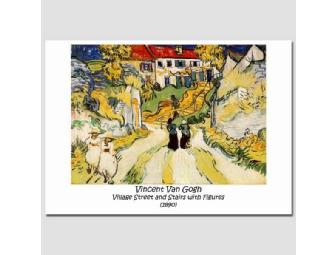
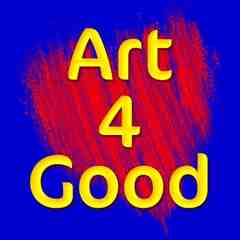
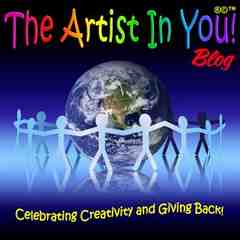 THE ARTIST IN YOU BLOG!
THE ARTIST IN YOU BLOG!
 THE ARTIST IN YOU TV CHANNEL!
THE ARTIST IN YOU TV CHANNEL!
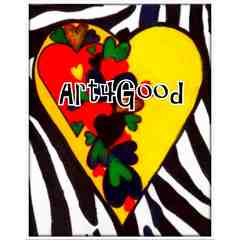 ART4GOOD ON FACEBOOK
ART4GOOD ON FACEBOOK
 ART4GOOD CHARITY NEWS EXCHANGE
ART4GOOD CHARITY NEWS EXCHANGE
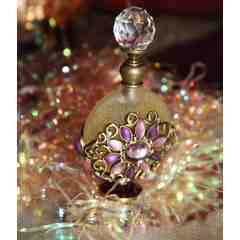 Femmena! The Essence of Love for the Epitome of Woman!
Femmena! The Essence of Love for the Epitome of Woman!
 THE ARTIST IN YOU ON TWITTER!
THE ARTIST IN YOU ON TWITTER!